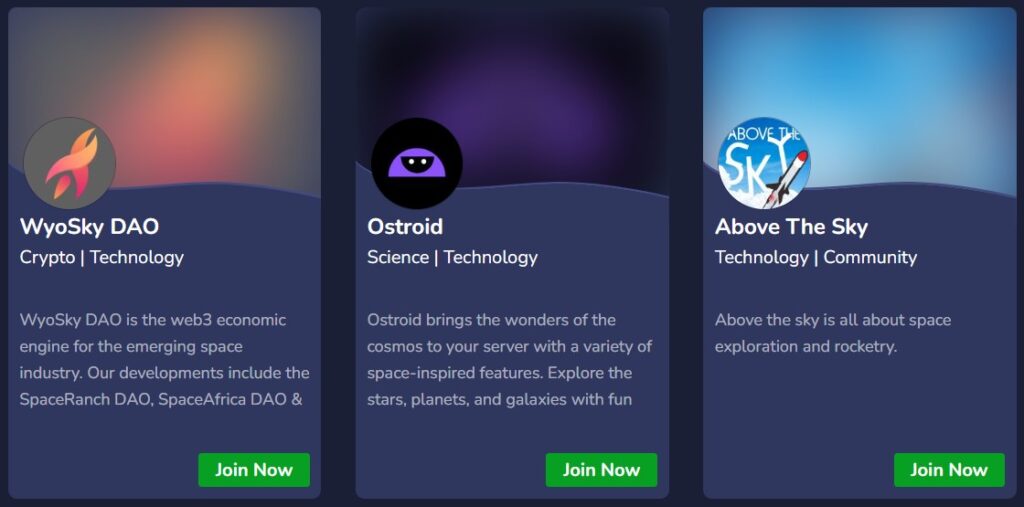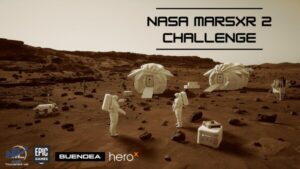Space exploration, and the exploitation of more affordable access to “near space,” both provide tremendous opportunities for innovation. Mass data generated by new technology can be analysed by artificial intelligence faster and more robustly to provide meaningful insights, accelerating idea development and reducing the time required for startups to turn those ideas into reality. So can crowds of people, usually volunteering their time and knowledge, and bringing a variety of diverse perspectives from different cultural backgrounds, experiences and expectations from around the world. Here are examples of how crowdsourcing innovation can play a significant role in unlocking the space frontier in several ways.
1. Citizen science
Space exploration generates vast amounts of data that can be overwhelming for scientists to analyze. Crowdsourcing gives access to crowds of citizen scientists to help classify and analyze data on the path to making new discoveries. Platforms like Zooniverse and NASA’s Citizen Science allow volunteers to assist in classifying galaxies, identifying craters on Mars, and even discovering new exoplanets.
A good example is analysis of the vast number of images created by the James Webb Space Telescope. Its near and mid-range infrared cameras reveal new details of the Universe and its range extends billions of lightyears further from Earth than any previous observations. An early crowdsourcing project using citizen scientists involved students trained to classify more than 5,000 high-redshift galaxy candidates by evaluating their shape and brightness in multiple imaging filters. The Zooniverse Project Builder was used to present the data to the students for inspection and to collect their classifications. The students’ analysis results enabled the project team to improve training the AI criteria for selecting high-redshift galaxy candidates, and to determine which of thousands of galaxy candidates they should prioritize for further JWST spectroscopic observations.
2. Crowdfunding
Space missions can be expensive, and traditional funding sources may not always be available or sufficient. Crowdfunding is the crowdsourcing of money, and it enables space enthusiasts – and anyone else – to support specific space projects that have a particular appeal to them. This type of early-stage funding can also help smaller organizations and startups get off the ground. Which is particularly true if the initial sums required are too low to interest VCs, and the use of new technology means traditional lenders have no comparative examples to assess in order to establish risk levels.
Crowdfunding projects have raised money for diverse reasons such as launching a three-stage rocket to beam images back to earth to stimulate space engineer training in the Democratic Republic of Congo, and one in The Netherlands funded testing astronauts’ urine as manure for vegetable growth on Mars.
A $7 million crowdfunding raise enabled a project organised by The Planetary Society: it put a satellite in Earth’s orbit for three years which verified solar sailing is a viable means of propulsion for satellites.
More recently, crowdfunding paid towards an observation satellite donated for use in Ukraine, and it has provided crucial intelligence for Ukraine’s armed forces to destroy Russian munitions and military equipment worth billions of dollars.
3. Collaborative innovation
Efforts aimed at crowdsourcing innovation can also bring together people with diverse skill sets to solve complex problems. NASA’s CoECI (Center of Excellence for Collaborative Innovation) platform invites the public to contribute ideas for space exploration challenges, such as developing new spacesuit technologies or designing a system for extracting resources from asteroids. This may take the form of an open innovation challenge, perhaps with prizes available. More on this topic later.
4. Education and outreach
Crowdsourcing can also be used to engage the public in space exploration and science.
The CosmoQuest platform has a diverse community that wants to talk about science, write code, share memes and play games. It uses the Patreon platform to offer people a variety of membership values. All levels can access video and podcast content, the highest membership allows members to join Zoom events.
Space-related chat groups allow like-minded people to interact with each other.
The Planetary Society’s mission is to empower the world’s citizens to advance space science and exploration. It supports the PlanetVac initiative, developed by Honeybee Robotics, which offers opportunities for people to participate in space-related activities and contribute to real-world projects. This support can be financial: PlanetVac’s science and technology program identifies promising future space technologies that need extra funding to become reality. People are also encouraged to support the organization through word-of-mouth and sharing images, and ultimately take out membership and step up to be an advocate.
5. Do prize challenges work for the space frontier?
Prize challenges can be an effective tool for advancing the space frontier, as they offer a way to incentivize innovation and encourage participation from a wide range of individuals and organizations.
Prize challenges work by offering a specific goal or objective, along with a prize or reward for achieving that goal. This approach can be particularly effective for space-related challenges as it encourages creativity and innovation in solving complex problems.
There are several examples of successful prize challenges in the space industry that exemplify crowdsourcing innovation. For example, the Ansari X Prize offered a $10 million prize for the first privately built spacecraft to reach space twice within two weeks. This competition led to the development of SpaceShipOne, which achieved the prize in 2004.
NASA’s Centennial Challenges program has offered a range of prize challenges, including the 3D-Printed Habitat Challenge, which sought to advance the technology for building habitats on other planets, and the Lunar Loo Challenge, which aimed to develop new concepts for human waste management on the Moon.
The HeroX prize challenge platform hosts the NASA Tournament Lab. The recent NASA MarsXR 2 Challenge, launched in February 2023, asked for contributions and storyboard concepts to test Virtual Reality technology in environments and situations that astronauts may encounter on Mars. Participants were given access to a virtual reality environment simulating Mars, and the people who made it to the second phase were required to build out those scenarios in the virtual reality environment. The challenge was open to individuals and teams of people aged 18 or more from any country. 3,700 individual innovators and 272 teams entered and there was $70,000 of prize money to be shared among up to 15 entries. Check out the winners.
Overall, crowdsourcing innovation in the space frontier can help democratize access to space and empower individuals to contribute to space exploration in meaningful ways. Prize challenges can be an effective way to stimulate innovation and advance the space frontier, as they encourage a broad range of individuals and organizations to work together to achieve specific goals.






0 Comments